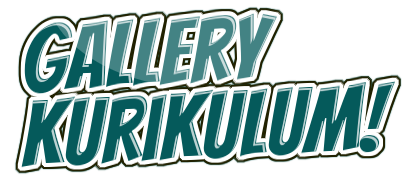Introduction
Are you looking to improve your home’s energy efficiency, durability, and aesthetic appeal? If so, insulated siding might be the perfect solution. This innovative home improvement option is becoming increasingly popular among homeowners due to its impressive benefits, ranging from enhanced insulation to increased property value. In this article, we’ll dive into the numerous advantages of insulated siding and why it’s a smart investment for your home.
What is Insulated Siding?
Insulated siding is a type of exterior cladding that combines traditional siding materials with a layer of rigid foam insulation. This added insulation improves thermal performance, making homes more energy-efficient while also providing extra durability. Unlike standard siding, insulated siding offers superior protection against harsh weather and enhances indoor comfort.
Types of Insulated Siding
Foam-Backed Vinyl Siding
One of the most popular options, foam-backed vinyl siding is lightweight, affordable, and effective in reducing heat transfer.
Fiber Cement Insulated Siding
Known for its exceptional durability, fiber cement insulated siding resists fire, pests, and moisture damage.
Composite Insulated Siding
A blend of materials like wood fibers and plastic, composite siding offers a balance of aesthetics, durability, and insulation.
Metal Insulated Siding
Typically made from aluminum or steel, this siding type is highly resistant to weather damage and offers excellent energy efficiency.
Top Benefits of Insulated Siding
Enhanced Energy Efficiency
One of the biggest advantages of insulated siding is its ability to reduce heat loss. The extra insulation helps maintain indoor temperatures, reducing the need for excessive heating or cooling. This leads to significant savings on energy bills.
Increased Home Comfort
No one likes cold drafts or uneven indoor temperatures. Insulated siding helps regulate indoor climate, ensuring your home stays warm in winter and cool in summer.
Noise Reduction
Live in a noisy neighborhood? Insulated siding acts as a sound barrier, minimizing outdoor noise and creating a quieter indoor environment.
Improved Home Aesthetics
Available in various styles, colors, and textures, insulated siding enhances your home’s curb appeal. Whether you prefer a modern or classic look, there’s an option to match your aesthetic preferences.
Durability and Longevity
Insulated siding provides better protection against extreme weather, moisture, pests, and physical impacts. This results in a longer-lasting exterior with minimal wear and tear.
Low Maintenance Requirements
Unlike wood siding, which requires frequent painting and repairs, insulated siding is low-maintenance. A simple wash with soap and water keeps it looking fresh.
Cost Considerations
While the initial cost of insulated siding may be higher than traditional options, the long-term energy savings and reduced maintenance costs make it a worthwhile investment.
Environmental Benefits
Choosing insulated siding contributes to sustainability by reducing energy consumption and lowering your home’s carbon footprint. Some types are even made from recycled materials.
How to Choose the Right Insulated Siding for Your Home
Consider Your Climate
If you live in a region with extreme temperatures, opt for high-insulation materials for better energy efficiency.
Compare Different Materials
Each type of insulated siding has unique benefits. Consider durability, aesthetics, and cost before making a decision.
Check Energy Ratings
Look for Energy Star-certified siding to ensure maximum efficiency.
Consult a Professional
Getting expert advice ensures you choose the best option for your home’s specific needs.
Installation Process and What to Expect
Installation involves removing old siding, preparing the walls, and securing the new insulated siding panels. A professional installation ensures the best results.
Common Myths and Misconceptions About Insulated Siding
- “It’s too expensive” – While the upfront cost is higher, long-term energy savings offset the expense.
- “It doesn’t make a big difference in energy efficiency” – Studies show that insulated siding significantly reduces heat transfer.
- “It’s hard to install” – With professional installation, the process is straightforward and efficient.
Conclusion
Insulated siding is more than just an exterior upgrade – it’s a long-term investment that enhances energy efficiency, durability, aesthetics, and home comfort. Whether you’re looking to reduce energy bills or improve your home’s appearance, insulated siding is a smart choice.
FAQs
-
How long does insulated siding last?
Most insulated siding options last 30-50 years, depending on the material and maintenance. -
Can I install insulated siding myself?
While DIY installation is possible, professional installation ensures better results and fewer issues. -
Does insulated siding really lower energy bills?
Yes! Insulated siding reduces heat loss, leading to lower heating and cooling costs. -
Is insulated siding worth the cost?
Absolutely. The long-term savings, durability, and increased home value make it a great investment. -
How do I maintain insulated siding?
Regularly clean with mild soap and water to keep it looking new.
